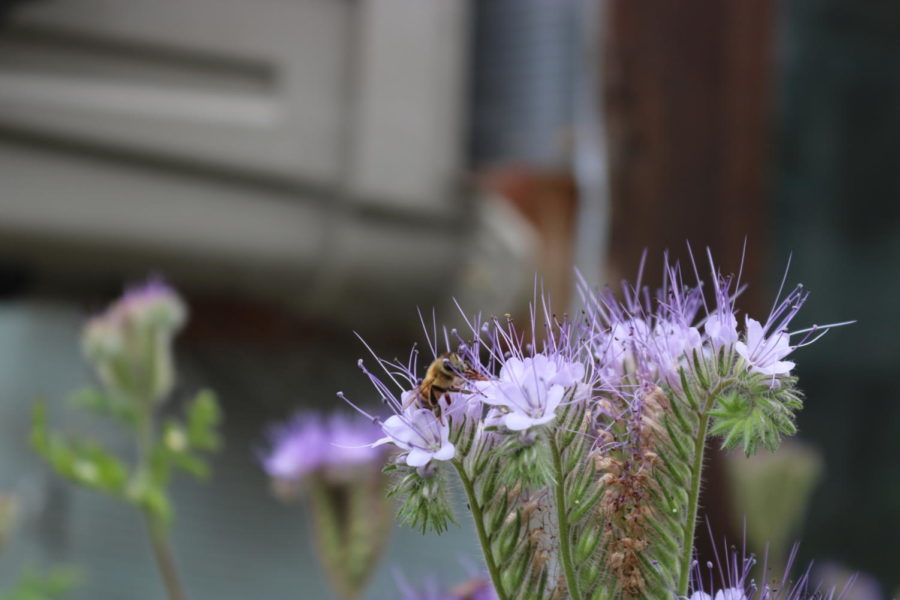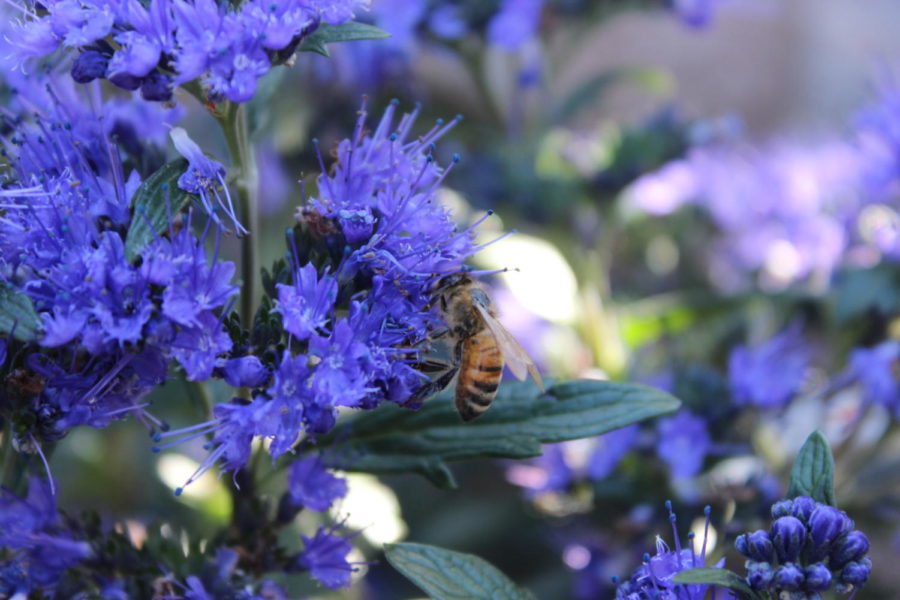In smoothies, tea, or juice.
On bread, salad, or fruits.
Or simply, by itself.
Honey has long since been an ingredient integrated into our daily diets. Bottles and jars filled to the brim with the iconic gold substance are typical household items that grace the shelves and pantries of the American kitchen.
However, those solely responsible for the production of this organic natural sugar are often overlooked. Since March of 2017, the rusty-patched bumble bee gained federal protection as an endangered species, according to Time. Several species of bees have followed since then.
However, Azucena Duran, a junior and the supervisor of the Human Relations commission, helped to organize a Save the Bees Day at Carlmont to change the often damaging relationship between humans and bees.
“Our primary goal was to raise awareness on the importance of bees and what they do for our environment,” Duran said. “We want Carlmont students to be aware of the bees’ endangerment issue and to have knowledge on the subject so to further improve our environment.”
On Sept. 13, Carlmont students had the chance to learn more about the role bees play in the environment and could purchase 2 centimeter-in-diameter seed bombs. When planted, they would bloom wildflowers and help bees pollinate.
Becky Kosovsky, a senior, stopped by during her lunchtime to buy some of the seed bombs and take pictures at the Save the Bees Day booth.
Kosovsky said, “I think the seed bombs are a really easy and cheap way to help the problem, so I was happy that they were selling them at lunch. I’m glad I got to participate.”
Native bee populations face habitat loss and destruction by invasive species, as according to National Geographic, but are oftentimes viewed by communities just as stinging pests.
Catherine Fraley, a local resident and longtime beekeeper who sells honey at the Burlingame The Fresh Market, likewise shares concerns about common misconceptions of bees.
“I try to assuage the fears of people about bees and bumblebees, who think flying insects are all aggressive like yellow jacket wasps. Sharing knowledge about bees has been in greater demand for all beekeepers to educate their communities as more media attention has been given to the honey bee crisis,” Fraley said.
Fraley discourages the use of chemical products in the garden, like RoundUp or Miracle Grow, while encouraging the contact of the Beekeeper’s Guild of San Mateo County for bee troubles around the home.
And although a few wildflowers planted in a backyard or planter box may appear as an insignificant course of action, a gradual awareness and contribution towards close ecosystems can make an impact. Duran said, “I hope this event makes the Carlmont community stronger in making students feel like they impact the environment even in a small way.”
Moreover, local farmers’ markets that feature organically grown and made products can help to bring attention to bees and their lasting influence.
“What started as a hobby led to educating and servicing the community as a steward and spokesperson for bees. I began selling honey at farmers markets like Burlingame in 2009, and most folks who approach your booth are curious about bees and want to hear about them,” Fraley said. “What I would love for fellow students to take away is they can really help the bee crisis by becoming informed experts, educating their families and spheres of influence with what they learn about bees and our environment.”
Every little bit counts, and the increased consideration in making the area a safer place for bees and their honey can start with any small efforts made by students.
“I came out of it feeling like we as students and young people can do something to help the problems of the world. An event like Save the Bees Day shows the Carlmont community that we can help the world’s environmental, social, political, etc. problems. Hopefully, we continue events like this in the future,” Kosovsky said.






Catherine Fraley • Sep 19, 2018 at 9:32 am
Nice job Megan! Well written. ?